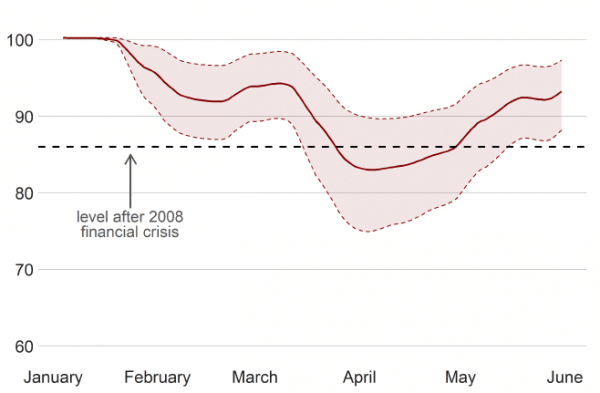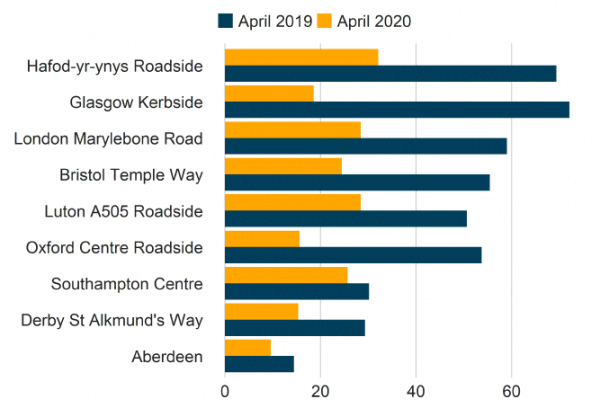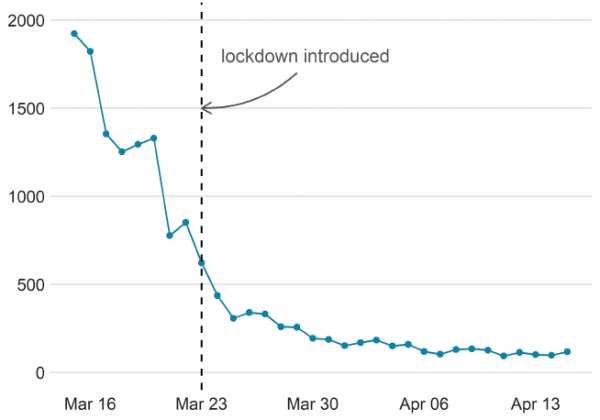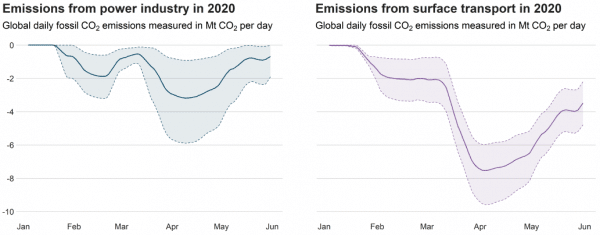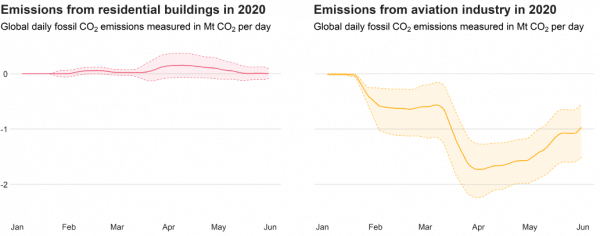Economic Futures, a project funded by the Scottish Funding Council, aims to engage with undergraduate economics students, graduates, and early career academics, across Scotland to provide an eco-system for applied economic analysis. Find out more here.
The 2020 Economic Futures Essay Competition was open to all Scottish students registered at a Scottish University studying Economics or an economics-related subject. Students were invited to write an essay on an Economics topic related to COVID-19. The competition was fierce and we had almost 100 entries, all of a very high standard.
The winner’s of the competition were:
1st: Catherine Bouchard, University of Glasgow
2nd: Maciej Zielinski, University of Glasgow
3rd: Lori McCluskey: University of Dundee
4th: Leanne Wilson: Glasgow Caledonian University
You can read the final 10 essays here.
In the next week we will be featuring the top 4 essays as articles in collaboration with our latest Economic Commentary, today we feature ‘Covid-19 pandemic, its impact on air quality and
possible long-run effect on the environment.’, written by Maciej Zielinski of the University of Glasgow.
Introduction
Global warming along with climate change has become the most urgent environmental problem of our time. It is true that throughout history, the Earth’s climate has changed multiple times, with cycles of “ice age” and retreats taking place (NASA, 2019).
However, the current warming trend is unique as it has, most likely, resulted from human activity. It has been shown that production and usage of non-renewable energy is highly correlated with GHG emissions (Mittnik et al., 2010). Empirical research also suggests that up to 90% of global CO2 emissions come from the usage of fossil fuels for generating electricity, heating, and cooling or for transport (Greiner et al., 2012).
However, the Covid-19 pandemic has changed the world as we know it. Lockdown measures compelled most of the population to stay in their homes and work from home whenever possible. Only essential services remained open and mostly included activities around food and medication – thus, the patterns of energy consumption should have drastically shifted. Many international borders were closed, hence reducing transport. The financial and economic consequences of such measures are likely to be dire. Still, such actions should cause a significant reduction in GHG emissions and therefore, improve the air quality around the globe. In this essay, I am going to explore whether the air quality improved as a result of the Covid-19 pandemic and try to discuss the possible long-run impact on the environment.
Emissions decline in the short run
Figure 1 shows how global daily fossil emissions changed over the last 60 years. It is clear that events affecting the global economy can have huge environmental consequences. The Covid-19 pandemic being a worldwide problem is thus expected to have an impact on global GHG emissions. Given the lack of real-time CO2 data, I have decided to follow Le Quéré et al. (2020) who estimated the potential Covid-19 short-run impact on GHG emissions. The authors emphasised that a striking decline in CO2 that can be observed in Figure 1 is about to happen right after the imposition of lockdown measures. Please, note that the increase in emissions from residential buildings seems to offset the decline in a very limited way as can be seen in Figure 5. Whenever the easing happens, international borders will reopen and people will commute more – causing the global daily emissions to rebound.
Figure 1: Global daily fossil CO2 emissions measured in Mt Co2 per day, 1960 – present
Source: Global Carbon Project
Figure 2 presents the predicted effect in greater detail. We can observe that from mid-March when the lockdown measures were introduced daily emissions plummeted reaching in April 2020 level lower than after the 2008 financial crisis. As previously stated, we would expect the transport sector should have been struck the most by the lockdown. That is why, in my further analysis I have used NO2 measurements from across various UK cities and a number of flights across the UK to see whether emissions from transport, in fact, declined.
Figure 2: Estimated daily CO2 emissions measured in Mt CO2 per day
Source: Global Carbon Project
Nitrogen dioxide being a byproduct of burning fuel by cars makes a good estimator for the amount of road traffic. When comparing average NO2 level for April 2020 with April 2019 (Figure 3), we can see that the emissions dropped drastically across UK cities. Even though I am using a sample of UK cities, the same results can be observed around the world as people were confined to their homes and compelled to limit their movement to a minimum.
Figure 3: Average NO2 emissions measured in μg/m³
Source: Department for Environment Food & Rural Affairs (Defra)
In Figure 4 we can observe a decline in the number of flights across the UK from 10 biggest airports. After the lockdown was introduced planes were grounded and thus, the number of flights in April was nearly 20 times lower than in mid-March. A smaller number of flights resulted in lower fossil emissions emitted by planes and clearer sky as for some time there were no condensation trails visible.
Figure 4: Tracked departures from UK 10 biggest airports
Source: flightradar24.com
Emissions from both surface transport and aviation seem to have declined as a result of the pandemic.
But why is it important?
As the environmentalists keep telling us, the fewer fossil emissions the better – but why? One of the reasons was already mentioned in the introduction, there is existing evidence suggesting that the current warming trend that we can observe is a result of human activity. When fossil fuels are burned CO2 and other greenhouse gases are released trapping heat in the atmosphere – thus, contributing to global warming and climate change.
The other reason is that climate change increases the amount of pollen and allergen produced by plants, mould proliferation, and concentration of particulate matter near ground level. This, in turn, increases the risk of asthma, rhinosinusitis, and other respiratory tract infections (D’Amato et al., 2014). Similarly, it has been shown that long-term exposure to high levels of NO2, often from increased road traffic, is linked to lung and cardiovascular diseases resulting in increased hospital admissions and mortality (Kurt et al., 2016).
One might think that the number of Covid-19 cases and the corresponding mortality rate depends only on the density of the population. The more people in one area, the more likely it is for the virus to spread and reap its bloody harvest. Interestingly, recent research suggests that it might not be entirely true. Travaglio et al. (2020) in the still unpublished paper provide evidence that the poor air quality markers are positively associated with an increased number of Covid-19 pandemic-related deaths in England after adjusting for the density of population.
Figure 5: Emissions from the power industry, residential buildings, surface transport, and aviation industry, in 2020
Source: Global Carbon Project
Possible long-run effects
As we have seen so far, the Covid-19 pandemic has most likely caused the GHG emissions to drop quite drastically during the weeks following the lockdown decision. There is however a very important question that needs to be answered. What will happen when the economy fully reopens?
Based on Le Quéré et al. (2020) predictions the CO2 emissions are on track to reach the pre-pandemic levels soon. In Figure 5 we can observe that disaggregated emissions from energy, surface transport, and aviation sectors have all decreased in April but are now on an increasing path as the countries start to implement their “lockdown easing” policies. We have observed a similar situation in the past. As shown in Figure 1 after each worldwide event that caused a decline in emissions, there happened a severe increase in GHG emissions in the following years. Most recently, the 2008 financial crisis has resulted in a 1.4% decrease in global CO2 emissions in 2009 followed by a 5.9% increase in 2010. Given the economic slowdown caused by the Covid-19 pandemic, world leaders are going to try to stimulate economic growth. Their actions are most likely to have a long-lasting impact on the air quality though – therefore, they need to be made with great caution. What we ideally want to avoid is a boost of the economy that is going to replace the health crisis with yet another one – amplified air pollution.
How to stimulate the economy in a way that does not ramp up fossil fuel production? The obvious answer is to invest in new technologies and services that will supply the world with cleaner and more efficient green energy. But will it be enough? Before the Covid-19 pandemic, the richest countries were already investing billions of dollars to make the transition to a low carbon economy – yet the global daily emissions were increasing every year. The availability of green energy infrastructure alone does not ensure that transition will take place as it is often an economic decision. In other words, the transition is possible when there exist a proper infrastructure and technology – but also it needs to be profitable for firms to switch to renewable energy resources. Making investments takes care of technological advancements but there has to exist an external driver for the transition.
This is where the Covid-19 pandemic can prove itself useful as it has shown without a shadow of a doubt that governments can take urgent and radical actions to contain the crisis. This whole situation is an example of a vicious circle: us consistently decreasing biodiversity and air quality and still, whenever the crisis presents itself we try so hard to fight it we make the environment even worse off as shown in Figure 1. This is precisely why people need to finally understand that their health is undeniably linked to air quality. People need to want the change to happen to believe that cleaner air is going to be beneficial for them in the long-run.
Conclusion
Unless we all understand that the “Spaceship Earth” as described by Boulding (1966) is real and start acting now to save our planet, both the environmental and economic changes will be irreversible. To mitigate climate change, the collective response being both effective and economically efficient needs to take place. Thus, when boosting our economy today we need to consider tomorrow. For countries to stimulate their economies and achieve long-term sustainable growth, our leaders need to consider the environment when making their decisions. Logic dictates that the long-term investments bad for the environment are not a perfect solution to the short-term economic downturn. Given the restrictions on travel and gatherings are challenging, by steadily adjusting our behavior to more sustainable we might be able to turn the Covid-19 to our advantage from the environmental point of view. That is why I am being optimistic about the future. Covid-19 pandemic along with raising climate change awareness might be the driver needed for the transition to finally happen.
You can read the full essay in PDF format here, and also read the other top 9 essays on the Economic Futures website.
Authors
Maciej Zielinski
Maciej Zielinski is a student at The University of Glasgow.


